This post contains affiliate links. This means that when you purchase through one of these links we will receive a small commission at no additional cost to you. Thank you for supporting Rich Texture Crochet!
The Nesting Shell Stitch is a beautiful stitch pattern that creates a solid fabric that is the same on both sides.
This stitch pattern is perfect for your projects that are double sided such as a crochet blanket. Wouldn’t this look gorgeous in a blanket or a cozy cardigan?
This post contains affiliate links. This means that when you make a purchase through one of these links, Rich Textures Crochet will earn a small commission at no additional cost to yourself. Thank you for supporting Rich Textures Crochet!
Once this stitch pattern has been set up it is an easy two row repeat. It is a great stitch to experiment with colour. I will be working the stitch in three colours in the video tutorial down below. At the end of each row, when working in the three colours it is not necessary to fasten off (as long as you will be adding a border or the pattern is being working inset in a project) but you can carry the loose unworked yarn carefully up the side of your work.
Materials for this Tutorial:
For this tutorial today I will be using a small amount of Pima Cotton Yarn by Lion Brand Yarn in three different colours. It is a worsted weight yarn. The hook shown in the video below is a 5 mm birchwood crochet hook by Rowan Yarns. However you may use any hook and yarn combination you choose.
Thank you so much for stopping by! If you enjoy the tutorial below, be sure to also check out some of the many other crochet stitch tutorials on my site and pin this for later! You may wish to start with the Suzette Stitch | How to Crochet.
The Nesting Shell Crochet Stitch:
Abbreviations:
Ch – Chain
Dc – Double Crochet
Rpt – Repeat
Sc – Single Crochet
Sk – Skip
Sl St – Slip Stitch
Yo – Yarn Over
Notes:
This stitch is worked in rows in this tutorial. You may work the stitch in one colour or many. I will be working the design in a three different colours.
To begin, make a slip knot and then chain your desired number of chains. For this stitch pattern you will need a multiple of four stitches plus two stitches for your foundation chain (multiples of 4+2).
For example, ch 22.
Row One:
Hdc in the 2nd ch from your hook and each ch across, ch 1, turn.
Row Two:
Sc in the first st, *sk the next st, 3 dc (Shell made) in next, sk next, sc in the next st; Rpt from * across and change to colour B in the final st, ch 3 and turn.
Row Three:
Dc in the 1st sc, *Dc2tog working under the first st 2 rows below, sk the shell and complete under the 2nd sc, work 3 dc in the next sc; Rpt from * across working final dc2tog under the final sc, 2 dc in sc, switch to colour C. Ch 1, turn.
Row Four:
Sc in the first sc, dc in the middle dc of the shell below, *3 dc in sp between 2 clusters, dc2tog working in the 2 middle dc sts two rows below, rpt from * across, switch to colour A, ch 3, turn.
And that’s it!
For the rest of the pattern repeat Rows 3 and 4. Fasten off and weave in your ends.
Video Tutorial:
The photographs and pattern contained in this document are the property of Rich Textures Crochet.
This pattern is for personal use only.
No unauthorized reproduction, in whole or in part, or distribution of this pattern or content is permitted. ALL FINISHED PRODUCTS from this pattern can be used for local sales and sold online.
Thank you so much for supporting Rich Textures Crochet! To stay in touch or see more great products, be sure to visit me on Facebook and Instagram (Rich Textures Crochet). Thanks again! Happy Crocheting!
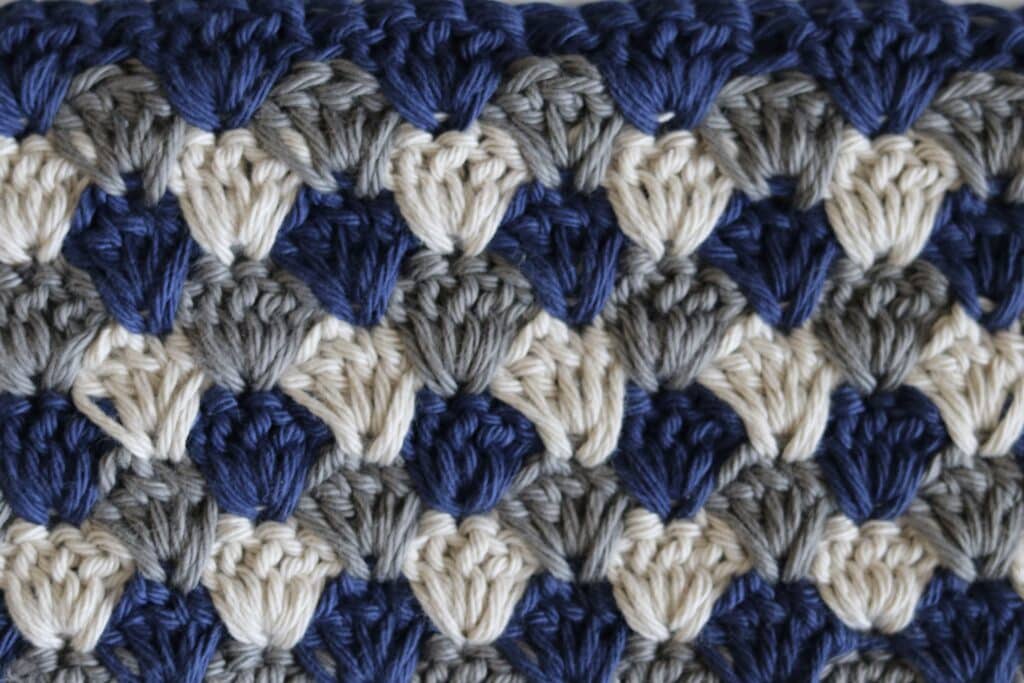
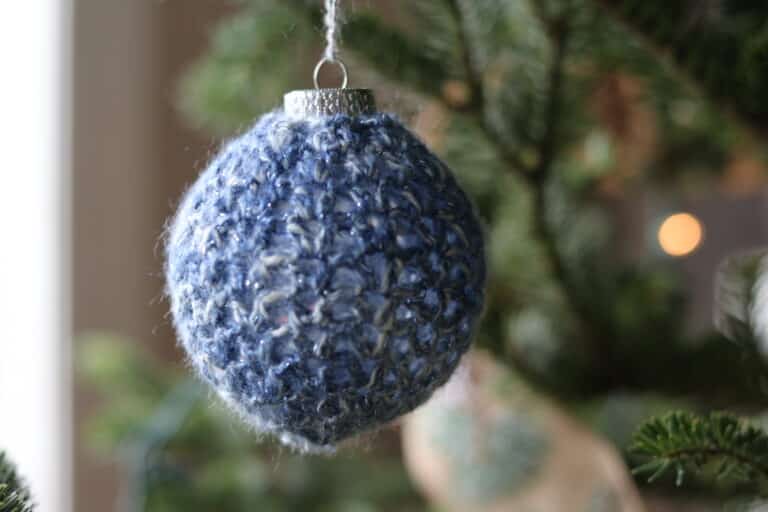
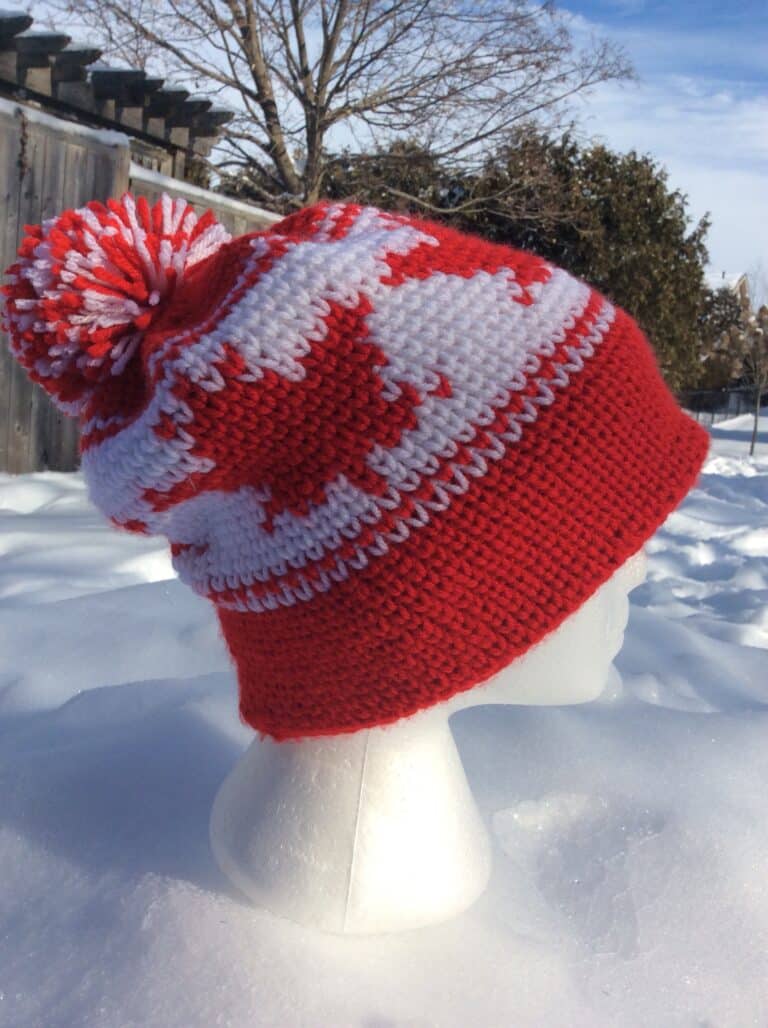
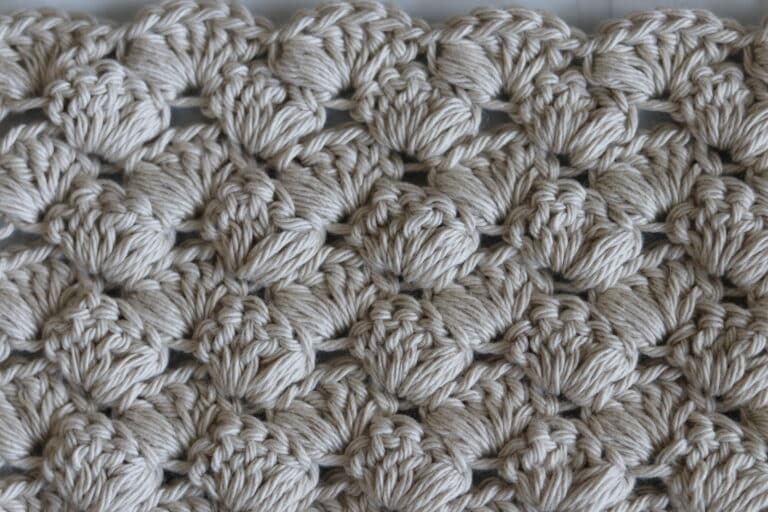
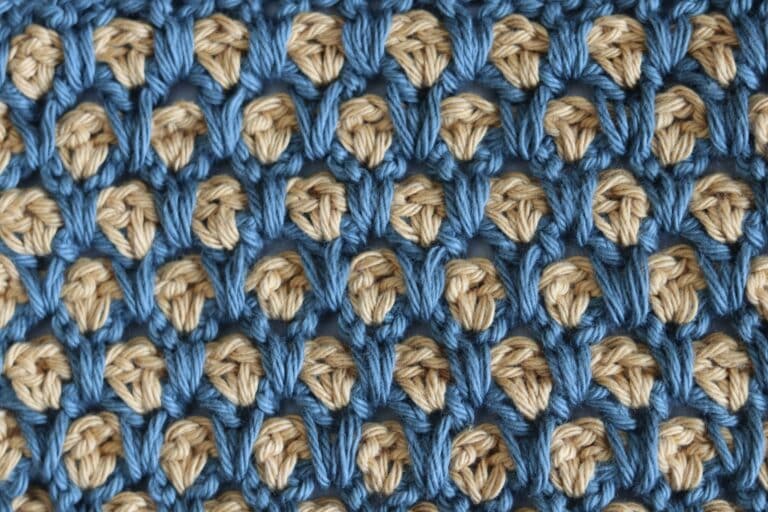
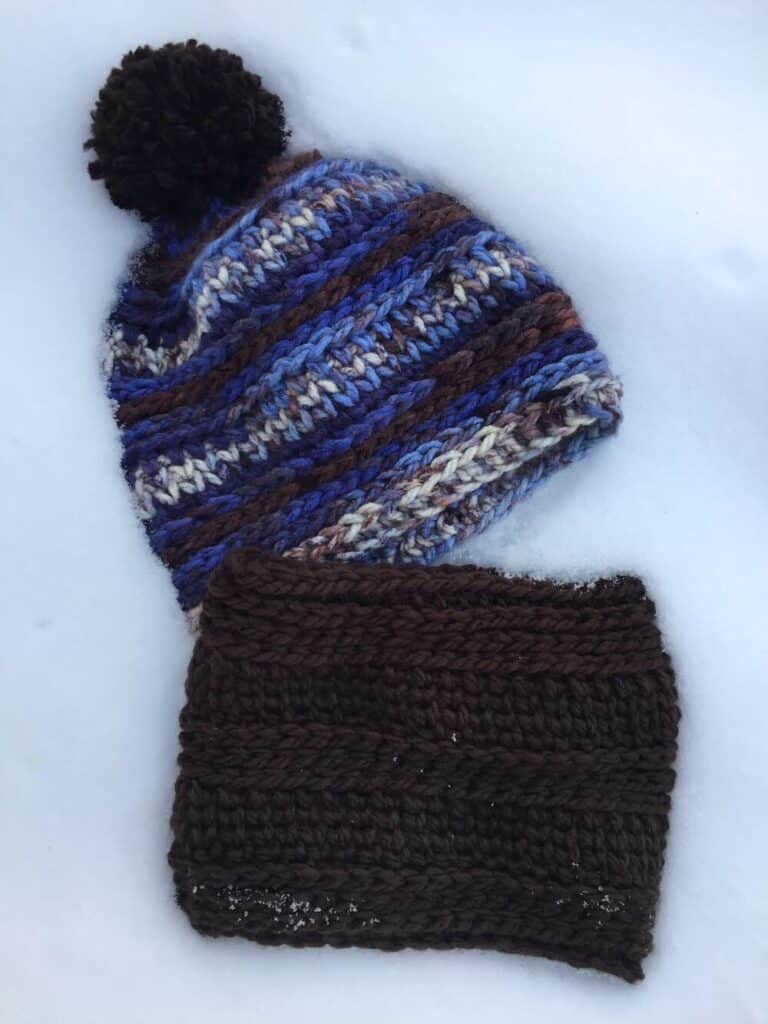
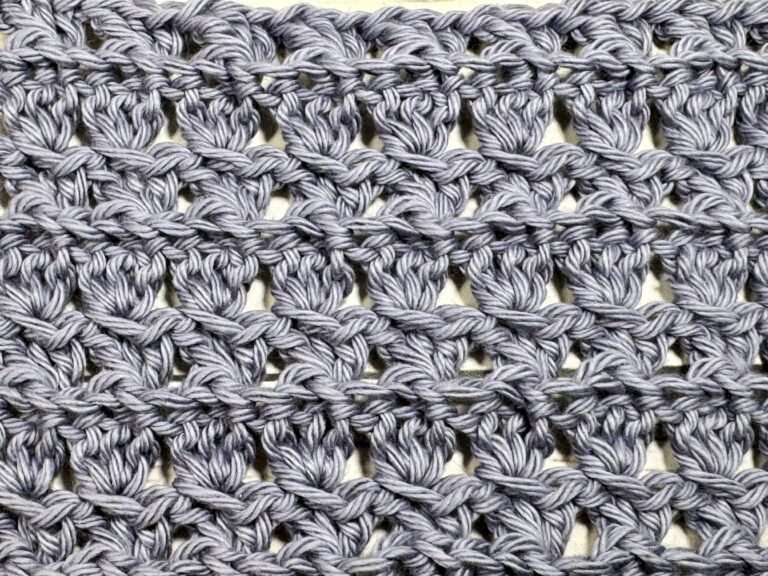
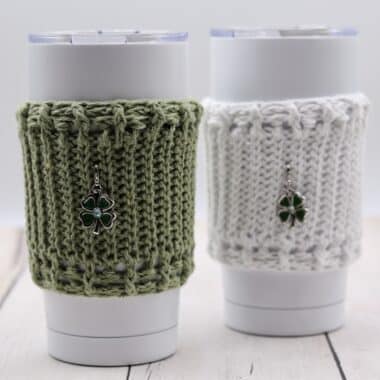
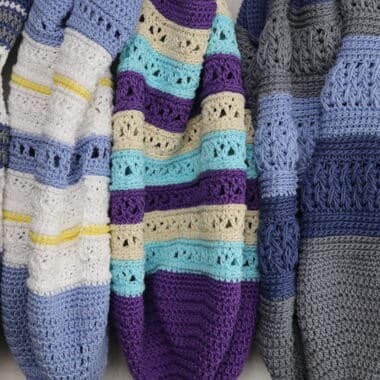
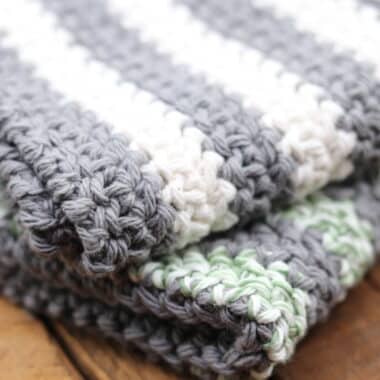
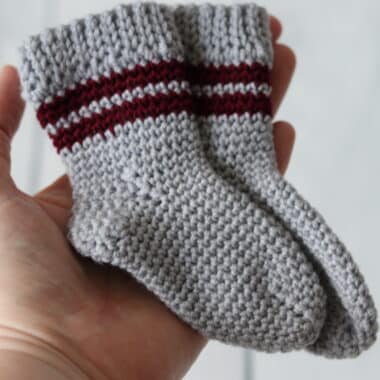
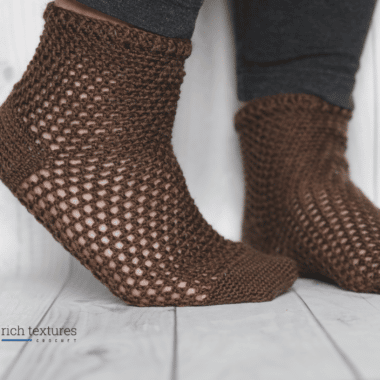
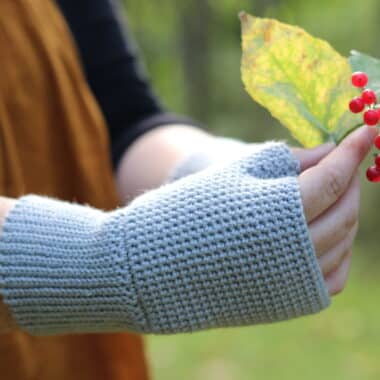

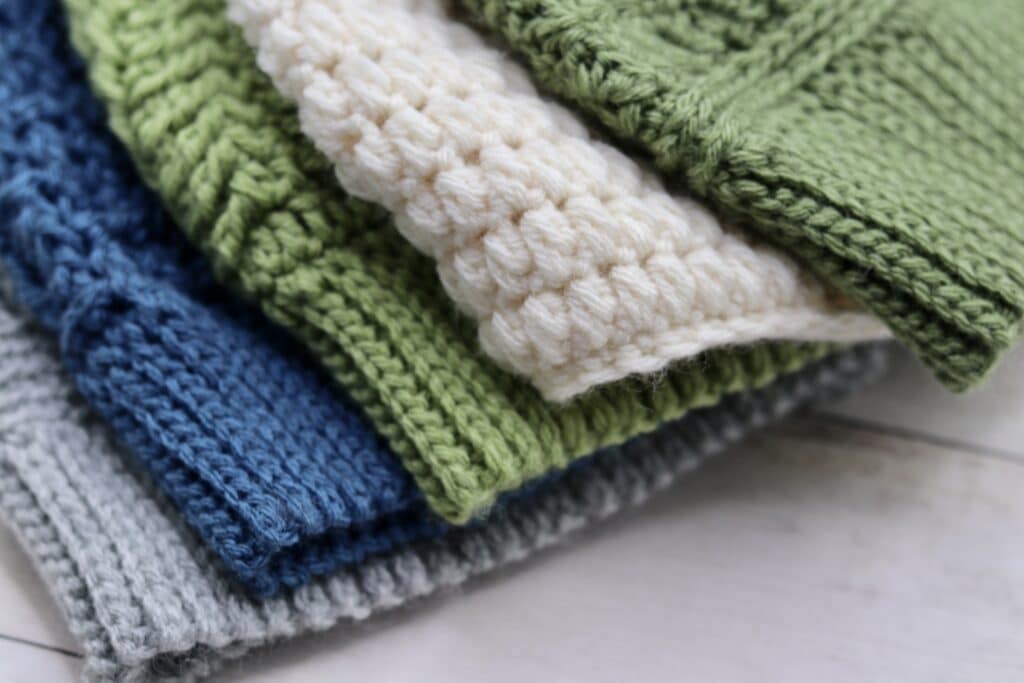


You say that rows 3 and 4 are the repeat, but they both refer to sc which are not in the instructions for those rows. I don’t see how this repeats…
Also, this is confusing: “dc in the middle dc of the shell below,” Below what?
The video helps a little, but the stitching of the main part of the row is skipped, so it’s hard to correlate the instructions with how it comes out. It looks like you could simply do 3dc two rows below and get the same thing.